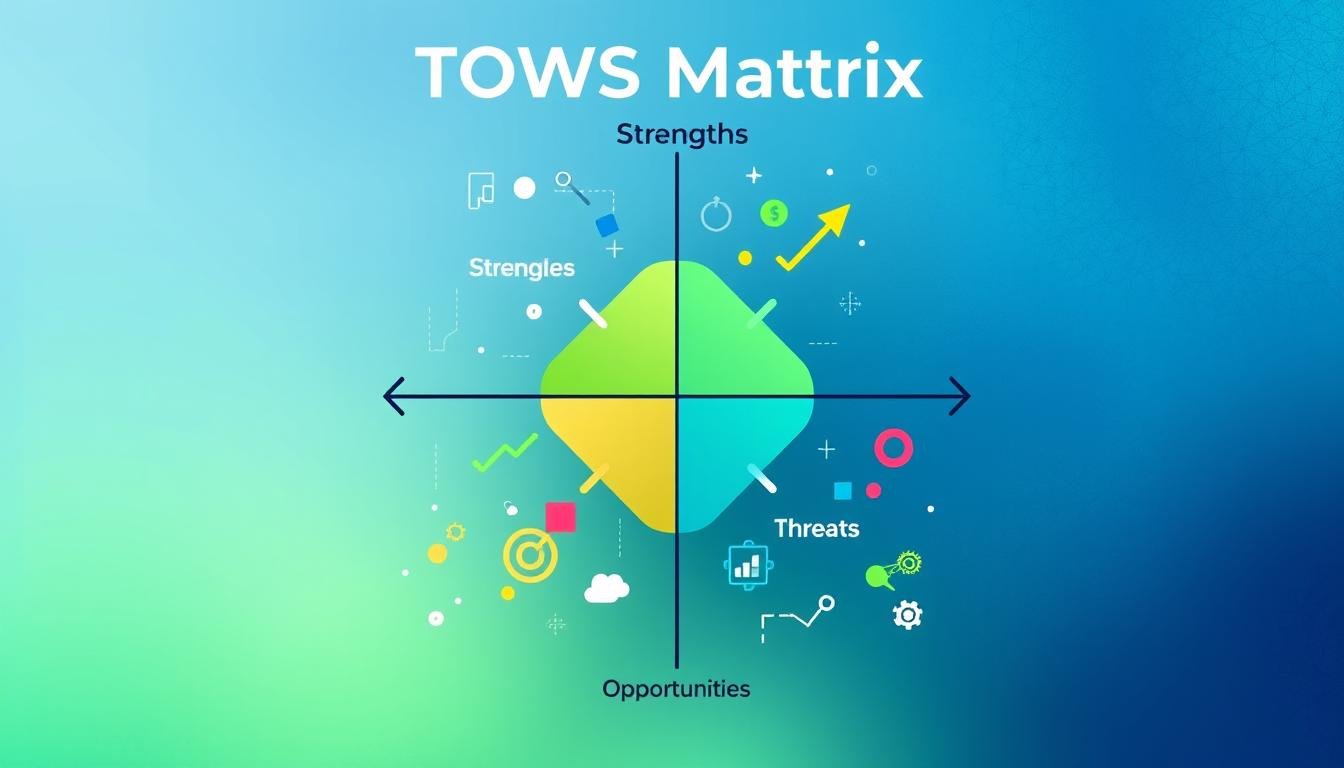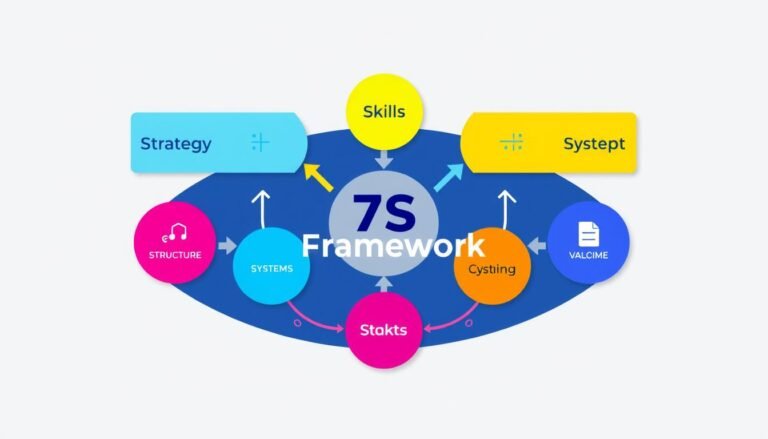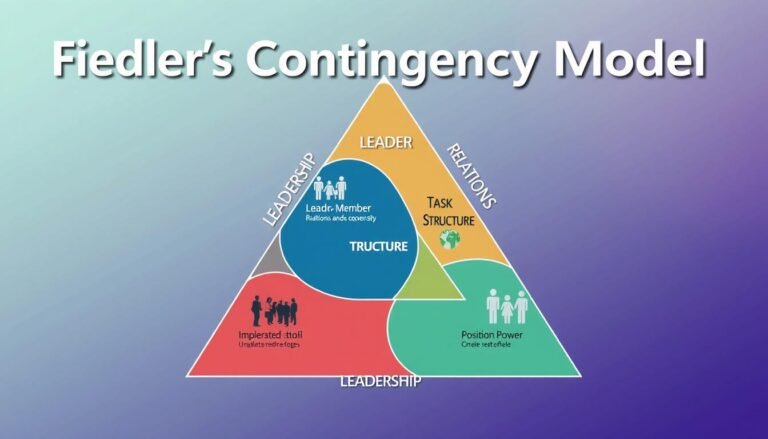Unlock Strategy Insights with the TOWS Matrix
Ever wondered why some businesses do well while others don’t make it? This question makes us look deeper into strategic tools that go beyond the usual. The TOWS Matrix is one such tool. It boosts strategy insights and turns strategic planning into a proactive process.
This tool helps organizations face their internal strengths and weaknesses. It also looks at external opportunities and threats. By doing this, businesses can make strategies that work well in today’s competitive world. We’ll explore how the TOWS Matrix can help your business in this article.
Key Takeaways
- The TOWS Matrix goes beyond SWOT analysis, offering a more actionable framework.
- It strategically aligns internal strengths with external opportunities to enhance growth.
- The framework aids in managing potential threats while addressing internal weaknesses.
- Successful implementation requires collaborative brainstorming and strategic tools.
- Cleverly using the TOWS Matrix can lead to innovative solutions in rapidly changing markets.
Understanding the TOWS Matrix
The TOWS Matrix is key for companies wanting to make strong strategies. It looks at both what’s inside and outside the company. This goes beyond the SWOT analysis, giving deeper insights into how things work together and affect the company.
Defining the TOWS Matrix
The TOWS Matrix helps with making strategic decisions by linking what the company can do with what’s happening outside. It’s all about using strengths and fixing weaknesses. Knowing how to define TOWS Matrix is key for better strategic planning.
Origins and Development
The origins of TOWS go back to 1999 with Heinz Weihrich and Albert Humphrey. Unlike SWOT analysis, which lists things separately, the TOWS Matrix shows how they connect. This leads to a more integrated and proactive strategy-making approach.
Key Components of TOWS Analysis
The main parts of TOWS analysis are:
- Strengths: Find what makes you stand out.
- Weaknesses: See what needs work.
- Opportunities: Use what’s happening outside to grow.
- Threats: Know what could go wrong.
A three-by-three table helps show how these elements interact. This leads to four strategies: SO, ST, WO, and WT. This approach helps companies plan for the future, making them more adaptable and resilient.
How the TOWS Matrix Differs from SWOT Analysis
The TOWS Matrix gives a fresh way to plan strategies compared to SWOT analysis. Both look at internal and external factors. But TOWS focuses on making strategies from these insights. This makes it better for companies to react to market changes.
Proactive vs. Reactive Approach
TOWS takes a proactive stance, helping companies use their strengths and fix weaknesses. SWOT analysis is often reactive, just listing strengths and threats without action plans. TOWS encourages businesses to act ahead, using opportunities and avoiding risks.
Integration of Internal and External Factors
Both TOWS and SWOT look at what’s inside and outside a company. TOWS sees these factors in a new way. It breaks down strategies into four types: using strengths and opportunities, fixing weaknesses and using opportunities, using strengths against threats, and fixing weaknesses against threats. This helps companies see how different things work together, making better plans.
Focus on Strategy Formulation
TOWS is all about making strategies, which is great for small businesses with limited resources. It helps by linking internal strengths with external chances. TOWS doesn’t just point out problems; it helps make clear strategies. This gives companies a way to stand out.
| Aspect | TOWS | SWOT |
|---|---|---|
| Approach | Proactive, action-oriented | Reactive, identification-focused |
| Strategy Development | Formulates strategies leveraging internal and external factors | Lists strengths, weaknesses, opportunities, and threats |
| Factor Integration | Dynamic integration of internal and external factors | Static assessment of internal and external factors |
| Target Audience | Effective for organizations lacking extensive resources | Widely used across various organizational sizes |
Unlocking Business Strategy Using the TOWS Matrix
The TOWS Matrix is key for businesses wanting to match their strengths with market chances. This approach helps companies use market potential and tackle big challenges. By using Strengths and Opportunities, firms can start new projects that grow and boost their edge in the market.
Aligning Strengths with Opportunities
To align well, companies look at their main strengths and match them with market chances. This means:
- Doing a deep check on what the company does best and what it has.
- Looking at what’s happening in the market for chances.
- Creating plans that use strengths to grab those chances.
Companies focus on TOWS Matrix Application strategies that bring new ideas and use what they’re good at to meet what customers want. For example, 81% of businesses say building a strong brand is key to finding big growth chances.
Addressing Weaknesses and Threats
It’s also key to work on Weaknesses and Threats. This means:
- Looking at what might slow down the company.
- Checking out what dangers are out there.
- Creating plans to lessen weaknesses and beat threats.
Companies that use the TOWS Matrix often find new ways to adapt and do well. For 88% of firms, avoiding risks is a top goal. This shows the importance of having a strong plan to handle business risks.
| Strategy Type | Description | Emphasis |
|---|---|---|
| SO (Strengths and Opportunities) | Leverage strengths to seize opportunities. | Innovation, Market Penetration |
| ST (Strengths and Threats) | Use strengths to counter threats. | Risk Management, Competitive Defense |
| WO (Weaknesses and Opportunities) | Overcome weaknesses by pursuing opportunities. | Resource Allocation, Improvement Initiatives |
| WT (Weaknesses and Threats) | Minimize weaknesses and mitigate threats. | Cost Optimization, Strategic Planning |
Implementing the TOWS Matrix in Strategic Planning
The TOWS Matrix is a key tool for turning SWOT analysis into real strategies. It helps organizations plan better by linking internal and external factors. This way, companies can make strong strategies to deal with their market challenges.
Steps to Conduct a TOWS Analysis
First, start with a detailed SWOT analysis. This step is crucial for understanding what you’re good at and what you’re not, plus what’s happening outside your company. Then, move on to the TOWS Analysis Steps:
- Identify key strengths and weaknesses from the SWOT analysis.
- Examine external opportunities and threats in the market.
- Map strengths to opportunities to identify SO strategies.
- Use strengths to counter threats, forming ST strategies.
- Leverage opportunities to overcome weaknesses, developing WO strategies.
- Create defensive strategies by addressing weaknesses and threats, leading to WT strategies.
Creating Actionable Strategies from TOWS Insights
Once you’ve mapped out your strategies, it’s time to make them actionable. Think about how to use your strengths and grab opportunities. Also, figure out how to fix your weaknesses to beat threats. For instance, a tech firm could use its strong R&D to meet the growing need for smart home devices. Or, it could use social media to boost its visibility even with a small marketing budget.
These examples show how the TOWS Matrix can be used in real situations. It connects theory with what actually works in the business world.
Examples of TOWS Matrix in Practice
Looking at real-world examples of the TOWS Matrix shows how companies use their strengths and spot opportunities. They also work on their weaknesses and face threats. TikTok and Shell are great examples of this. They use the TOWS Matrix to move forward in their markets.
Case Study: TOWS Analysis for TikTok
The TikTok TOWS Analysis shows how TikTok uses its big user base to stay ahead. It looks at its strengths and plans for the future. By always coming up with new ideas, TikTok keeps up with what users want. This helps it beat the competition.
Case Study: TOWS Analysis for Shell
The Shell TOWS Analysis reveals how Shell is changing with the times. It uses its strong finances to invest in green energy. This helps it use its strengths and fix its weaknesses. It also helps it take advantage of new chances in the market.
| Organization | Strengths | Weaknesses | Opportunities | Threats | TOWS Strategy |
|---|---|---|---|---|---|
| TikTok | Large user base, innovative content | Intense competition | Emerging markets, content diversification | Regulations on social media | Leverage strengths to explore growth markets |
| Shell | Financial resources, market presence | Dependence on fossil fuels | Renewable energy investments | Environmental regulations | Utilize financial stability for sustainable initiatives |
Conclusion
The TOWS Matrix is a key tool for better strategic insights and decision-making in business. It was created by Heinz Weihrich in 1999. This tool goes beyond the usual SWOT analysis by focusing on external factors first. It gives a full view of the strategic situation.
It looks at Threats, Opportunities, Weaknesses, and Strengths. This helps companies move quickly and wisely in a competitive world. By using their strengths to grab new chances and fixing their weaknesses to avoid risks, businesses can grow and excel.
The TOWS Matrix promotes a forward-thinking approach. It matches what a company can do with what’s happening outside. This is very important for companies of all sizes and types. It helps them make plans that are focused and work well.
Finally, the TOWS Matrix is more than just a plan-making tool. It also lets companies check and update their strategies as things change. This tool shows how important it is to use both what a company can do and what’s happening outside. It’s a key tool for making smart choices in today’s fast-paced business world.
Source Links
- Understanding TOWS Analysis: Advanced SWOT Analysis
- Beyond SWOT- Understanding the Power of The TOWS Matrix | Creately
- Mastering Your Customer Journey: Using the TOWS Matrix to Handle Customer Touchpoints – EasyBA.co
- How to use a TOWS matrix: A comprehensive guide | Roadmunk
- An Introduction to the TOWS matrix: Putting SWOT into action
- Tows Matrix Analysis Meaning, Template and Examples
- Difference Between SWOT & TOWS Analysis
- The TOWS Matrix: Putting a SWOT Analysis into Action
- An introduction to TOWS Analysis | Lucidity
- Strategic Options:TOWS & SWOTS
- Strategic Positioning and SWOT TOWS Matrix: How to Generate and Evaluate Alternative Strategies Based on Your SWOT Analysis – FasterCapital
- Best AI Prompts for TOWS Analysis
- Using the TOWS Matrix for Strategy Formulation
- Using the TOWS Matrix for Strategy Formulation – Kyle C. Murphy
- Dental practice strategy, Pt. 2: From SWOT to TOWS
- How to use SWOT/TOWS analysis for prioritization [Matrix] | Smart Insights
- Microsoft Word – tows.doc
- TOWS Matrix: Putting SWOT into action
- What is TOWS Matrix Analysis: Definition & examples – forms.app







